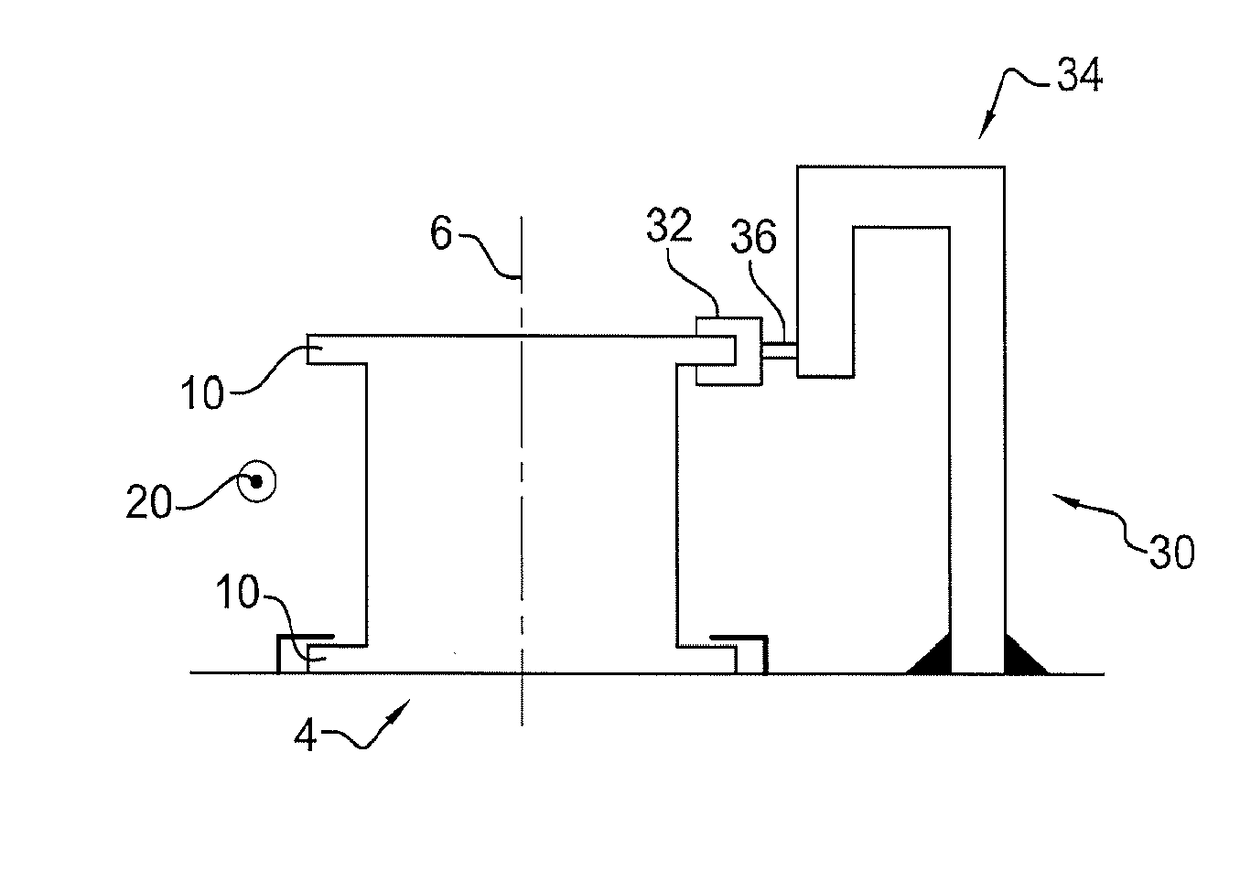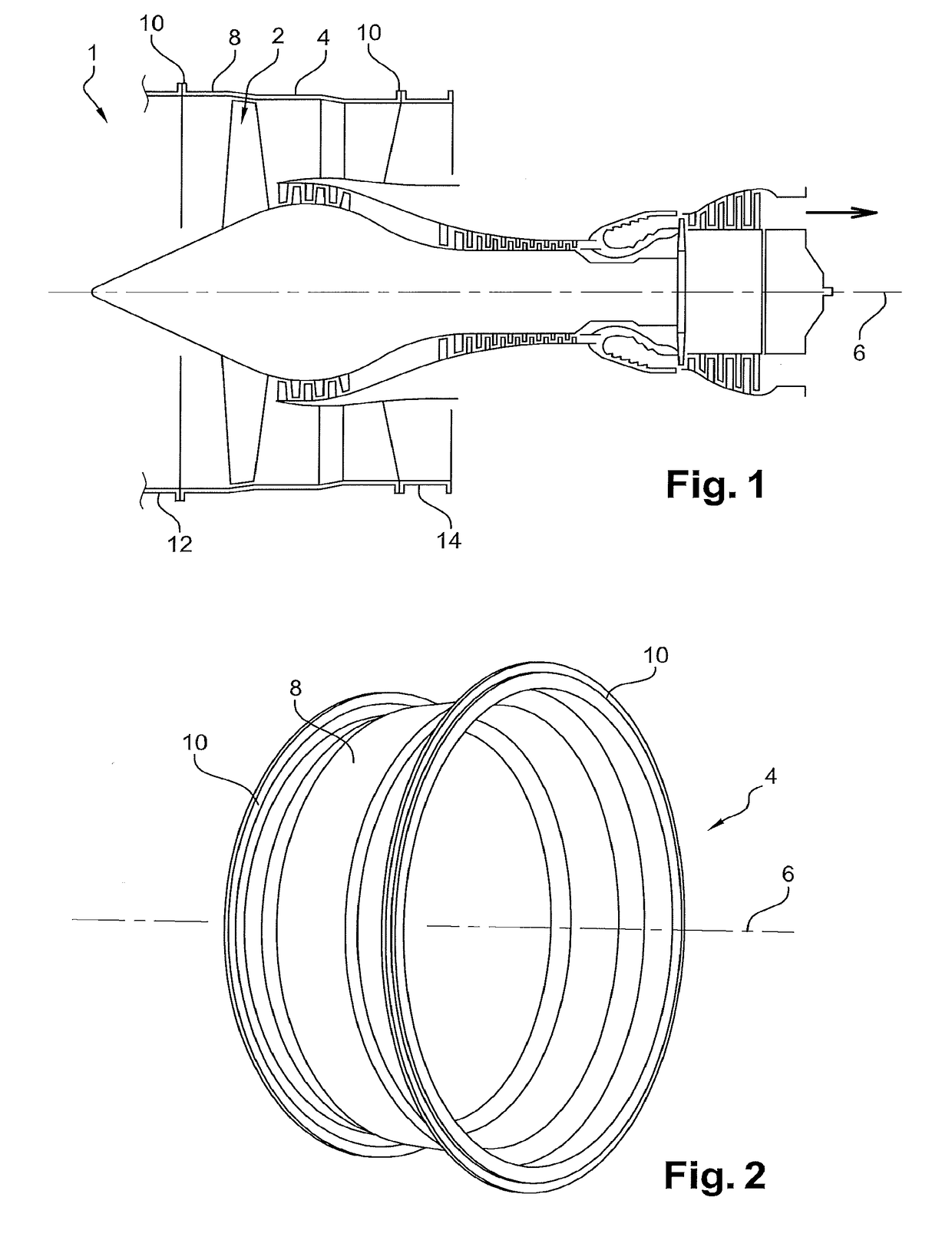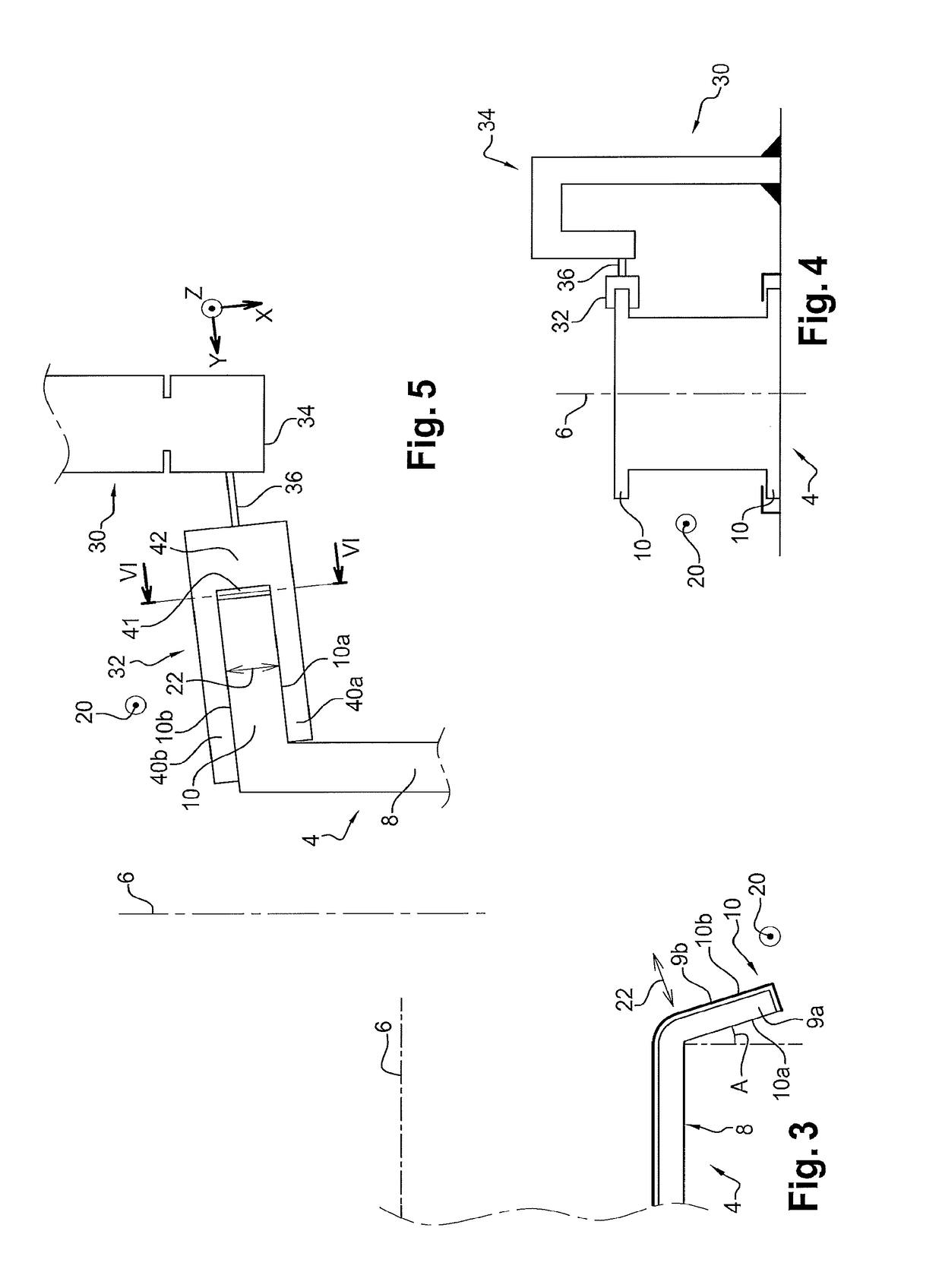Method for machining an attachment flange of an aircraft turbomachine case
- Summary
- Abstract
- Description
- Claims
- Application Information
AI Technical Summary
Benefits of technology
Problems solved by technology
Method used
Image
Examples
Embodiment Construction
[0051]With reference firstly to FIG. 1, the figure shows an aircraft turbomachine 1, of the twin-spool turbojet type. This turbojet 1 is equipped with a fan 2 surrounded by fan case 4, centred on the longitudinal axis 6 of the turbojet. In a known manner, the fan case 4 comprises a shell 8 supporting two attachment flanges 10 at its ends. These flanges are used for mechanical connection with adjacent elements of the turbojet, normally an air intake12 and an external shell 14 of an intermediate case.
[0052]With reference to FIGS. 2 and 3, it can be seen that the two attachment flanges 10 extend essentially in the radially outwards direction from the shell 8. The flanges 10 can be inscribed in the transverse planes of the case 4, or they can be in the form of a truncated cone as shown diagrammatically on FIG. 3. In this case, there is an angle A between the normal to the shell 8 and the attachment flange, as seen in an axial half-section. This angle is normally small, for example a few...
PUM
 Login to View More
Login to View More Abstract
Description
Claims
Application Information
 Login to View More
Login to View More - R&D
- Intellectual Property
- Life Sciences
- Materials
- Tech Scout
- Unparalleled Data Quality
- Higher Quality Content
- 60% Fewer Hallucinations
Browse by: Latest US Patents, China's latest patents, Technical Efficacy Thesaurus, Application Domain, Technology Topic, Popular Technical Reports.
© 2025 PatSnap. All rights reserved.Legal|Privacy policy|Modern Slavery Act Transparency Statement|Sitemap|About US| Contact US: help@patsnap.com



